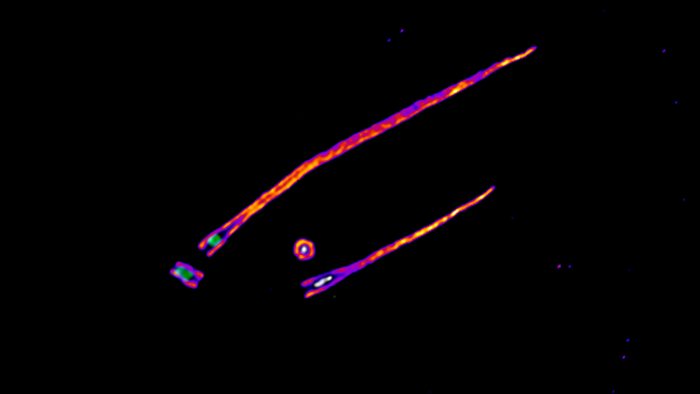Centrioles are cylindrical structures involved in the generation of microtubules—fibers inside of cells that form a network to provide structure and shape to cells and to mediate transport processes. In addition, centriole are required to build cilia, hair-like extensions on the cell surface that allow cells to receive and respond to signals from the outside.

Credit: IRB Barcelona
Centrioles are cylindrical structures involved in the generation of microtubules—fibers inside of cells that form a network to provide structure and shape to cells and to mediate transport processes. In addition, centriole are required to build cilia, hair-like extensions on the cell surface that allow cells to receive and respond to signals from the outside.
Researchers at IRB Barcelona’s Microtubule Organization lab, headed by Dr. Jens Lüders, have identified a new crucial role for γTuRC as a centriole stabilizer and have also identified a form of microcephaly in which this novel function of γTuRC might be perturbed. γTuRC was known to be centriole-related, acting as an initiator of microtubule formation, but this new stabilizer role was not known to date.
Given that microtubules are pivotal for cell function, it is not surprising that their malfunction is associated with a wide range of human diseases. “Our findings suggest that pathologies linked to defects in γTuRC or its localization, such as certain forms of adolescent scoliosis, ophthalmological disorders and male infertility, may involve not only defects in the generation of microtubules but also in centriole stability. We hope this new perspective will lead to a better understanding of these diseases,” Dr. Lüders explains.
Unveiling the γTuRC complex
γTuRC is a protein complex that was discovered over 25 years ago, and it has generated much interest due to its key role in microtubule formation. However, its complex structure, which the Lüders group was able to identify only last year in a collaboration with the Llorca group at the CNIO (Madrid, Spain), has made it hard to obtain a detailed description of its behaviour and functions.
“We had to combine functional assays with expansion microscopy and super-resolution microscopy in human cell cultures to locate γTuRC inside the centriole cylinders and see how it acts as a centriole stabilizer, independent of its role in generating microtubules” says Dr. Nina Schweizer, first author of the work and former postdoctoral researcher at IRB Barcelona.
This work has been performed in collaboration with Dr. Andreas Merdes’ lab at the Centre de Biologie Intégrative, CNRS-Université Toulouse III (Toulouse, France). Work in the Lüders lab has been funded by postdoctoral fellowships to Nina Schweizer (European Commission and EMBO), the Spanish Ministry of Science and Innovation, and the Generalitat de Catalunya.
Journal
Nature Communications
DOI
10.1038/s41467-021-26252-5
Method of Research
Experimental study
Subject of Research
Cells
Article Title
Sub-centrosomal mapping identifies augmin-γTuRC as part of a centriole-stabilizing scaffold
Article Publication Date
15-Oct-2021




